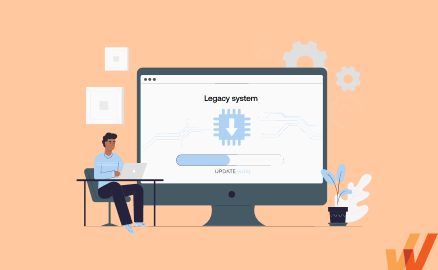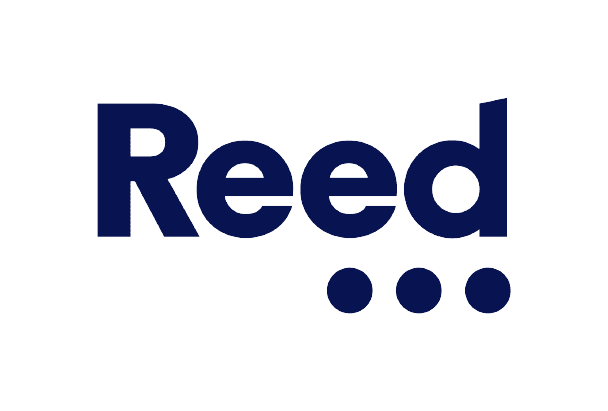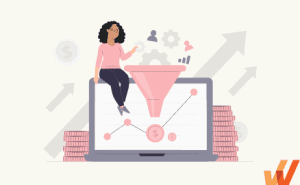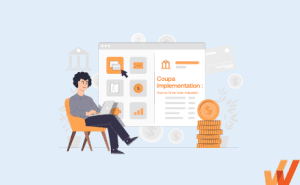How To Retire Legacy Applications Successfully
- Published: March 14, 2024
- Updated: March 18, 2024

The fallout from the COVID-19 pandemic in 2020 necessitated a shutdown in the United States, where millions of people filed for unemployment every week. But, the Department of Labor couldn’t process those claims quickly enough, leaving thousands of Americans unable to receive unemployment or pandemic-related stimulus checks.
A disproportionate amount of federal agencies (including the U.S. Treasury, IRS, State Department, and NASA) and 45 states, plus the District of Columbia, run their mainframes on COBOL, a 65-year-old programming language that’s slowly being phased out in favor of newer, more versatile languages. Estimates suggest that there are just over 27 million developers; the number who are still COBOL-proficient is vanishingly tiny.
While COBOL might be old and inflexible, legacy industries love it for precisely that reason: it’s the backbone for at least 43% of modern banking, and an estimated 95% of ATMs worldwide run on it, apart from usage across private and public institutions where COBOL applications are used to process payroll, manage government pension funds, manage hotel bookings, book airline tickets, etc.
So, when the workload ballooned larger than these legacy COBOL applications were designed to accommodate, and since there was no easy way to make these requisite changes on the fly, state governments and corporations like IBM and the Linux Foundation had to put out a call for programmers, offering to hire COBOL experts post-haste or train existing developers to master the language quickly.
If these systems had been written in modern programming languages like Python, C++, and JavaScript, modifying their functions or hiring more programmers on short notice would have been trivial.
This anecdote has repeated itself in every primary industry, from manufacturing to retail. It is the best argument for retiring legacy systems: they’re often outdated, have a limited talent pool to hire from, are extremely limited, and their functionality scales poorly.
This article will help you understand when to phase out legacy tools in your stack, best practices for successfully undertaking legacy application modernization, and how digital adoption platforms (DAP) can help ease the transition.
What Is a Legacy System?
In IT and software development, a legacy system refers to any outdated or obsolete software, technology, or application that continues to be used within an organization. These systems often have been in operation for many years and may not be actively supported or maintained by the original developers or vendors. Digital transformation often can be an umbrella term for legacy system modernization efforts.
Legacy systems tend to run on outdated technology, lack integrations, are limited, and often need more documentation. As a result, they are more susceptible to security threats and cost more to maintain or integrate with newer technologies or platforms.
Reasons to Retire Legacy Applications
Organizations stick with legacy applications primarily because of inertia: “If it’s not broken, why fix it?” And it’s undeniably smart logic since it frees up time, energy, and resources for other mission-critical parts of your business that affect your bottom line. So, at what point is it advisable to finally switch from a legacy application?
1. High maintenance and operational costs
Let’s circle back to the COBOL example: because these government agencies couldn’t hire experts quickly enough, they had to default to contractors, paying them up to $100 per hour. If they were trying to hire some languages with even rarer experts, it wouldn’t be unusual to budget up to $500 per hour for any expert with the bandwidth to take on the work.
And that’s before you factor in the overhead of integrating such an outdated system with newer tools.
2. Security vulnerabilities
Microsoft released XP in 2001, a popular Windows operating system version. In 2009, they ended mainstream support for it, while extended support continued until 2014. But, as late as 2020, systems used in critical industries like healthcare, defense, and energy were still running Windows XP.
Specifically, research by Palo Alto Networks’ Unit 42 shows that a wide range of internet-connected imaging devices—used for taking X-rays, MRIs, mammograms, and CAT scans—still run on outdated operating systems like Windows XP, that can’t be updated, even when they contain vulnerabilities hackers can exploit.
In fact, it’s easy for a motivated hacker to disrupt or disable such systems, which is why estimates suggest that ransomware attacks on American healthcare organizations have cost the economy around $77.5 billion in downtime since 2016.
3. Lack of vendor support
Major oil and gas operators across the United States still run on the aforementioned Windows XP, the same system the United Kingdom uses for its nuclear arsenal. Surveys from as recently as 2019 show that at least one in three businesses still run on Windows XP—industrial machinery, assembly line equipment, US Navy vessels, and even nuclear reactors.
In other words, all these tools are still cutting-edge and perform their intended functions flawlessly. But due to the lack of vendor support, they’re hopelessly outdated and would need significant, multi-billion dollar investments to bring them up to date.
4. Scalability issues
Like in the COBOL example we started with, legacy applications are usually adopted early into an organization’s lifetime. They work well with minimal hiccups, and then gradually, an ecosystem of experts and consultants is built around it, fixing problems, tacking on custom software scripts, and going to great lengths to integrate it with the rest of the organization’s stack.
Initially central to an organization’s operations, legacy applications often fade into the background, receiving attention only during infrequent maintenance periods. Despite this neglect, they tend to function smoothly. That is, until your organization’s workload increases significantly, turning your legacy application into a bottleneck. Because they were designed or adopted early on, legacy applications tend to fail at critical moments when usage exceeds their low historical benchmarks.”
5 Challenges in Retiring Legacy Applications
The challenges you’ll face as you phase out your legacy applications range from technical to cultural. You might quite possibly be exporting data between different systems that are not inherently compatible and hence, your organization might require the services of experienced implementation partners, working with dedicated tools, scripts, and software to make the transition.
Similarly, you’ll have to gradually introduce your workforce to your intended changes, secure their buy-in, and ensure you maintain that goodwill until your project is concluded.
1. Data migration complexities and loss of historical data
For the most part, legacy applications often store large volumes of data accumulated over years or decades of operation. Migrating this data to a new system while ensuring accuracy, completeness, and integrity can be a complex and time-consuming process, particularly if the data is structured in non-standard formats or stored across multiple databases.
They might also suffer from issues such as inconsistencies, duplicates, inaccuracies, and outdated information. Migrating such data without addressing these quality issues can lead to data corruption, loss of trust, and inefficiencies in downstream processes within the new system. Further, the data stored in older applications may not be compatible with the data structures and formats used by the new system. Mapping and transforming data from the legacy format to the new format requires careful planning, validation, and testing to ensure that data is correctly interpreted and preserved during migration.
2. System integration issues
Legacy applications tend to have custom-built interfaces, APIs, or data connectors that facilitate integration with other systems. As they were often designed-to-order, they might not sync with your new system and its different technologies, data formats, or protocol, leading to interoperability issues during integration. Ensuring compatibility and seamless communication between the new system and existing systems may require custom development or middleware solutions.
Integration issues pose a risk of disrupting critical business processes and operations. Any disruptions or failures in integrated systems can have cascading effects on downstream processes, leading to downtime, delays, and potential financial losses for the organization.
3. Internal resistance to change and driving end-user adoption
If your end-users have grown accustomed to working with the legacy application over a long period, especially if you operate in a traditional industry (healthcare, finance, manufacturing, utilities, etc.) where change happens slowly. These hands-on end-users may feel comfortable with an existing application’s interface, features, and workflows, making them resistant to the idea of transitioning to a new system.
At best, if they don’t understand the reasons behind the transition or the benefits that the new system will bring to the organization, they may be hesitant to embrace the transition; at worst, they may perceive the transition to a new system as a disruptive and uncertain process. They may fear that the new system will be difficult to learn, that they will lose access to familiar features, or that their job roles may change as a result of the transition.
4. Skills gap in new technologies
New systems often require end-users to learn new workflows, interfaces, and processes. The learning curve associated with the new system can lead to temporary slowdowns in productivity as users adjust to the changes. That, in turn, requires you to dedicate training and development resources, including IT personnel, project managers, and support staff to help your end-users bridge the gap.
5. Business disruptions during the transition
Transitioning from a legacy application to a new system often requires downtime for migration, testing, and training. During this period, businesses may experience disruptions in operations, leading to loss of productivity and potential revenue losses. And that’s before you account for the fact that any issues or discrepancies in data migration can result in data loss, corruption, or inconsistency, leading to disruptions in business processes and decision-making.
Likewise, since they’ve been a part of your operations for a significant while, legacy applications may be tightly integrated with other systems and processes within the organization. Transitioning away from these legacy systems can disrupt existing integrations and require reconfiguration or redevelopment of interfaces, APIs, and data flows.
Best Practices for Retiring Legacy Applications
You need a well-thought-out strategy for managing your transition away from legacy software applications; otherwise, it might be an unmitigated disaster.
Before you start implementing any changes, you need to take stock of the infrastructure of your existing system, choose a modern alternative that matches (and exceeds) all its features, and then make the switch in phases to prevent failure or holdups in your organization’s day-to-day workflow, while the transition is underway.
1. Conduct thorough assessment and inventory
This involves identifying all legacy applications within your organization’s IT ecosystem and creating a comprehensive catalog that documents their key details, such as application name, version, purpose, functionality, dependencies, and business importance.
Once the inventory is established, the next step is to assess the business impact and technical debt associated with each legacy application. You must evaluate factors such as:
- Usage
- Relevance to current business processes
- Impact on productivity
- Revenue generation
- Compliance requirements
- Outdated technology stack
- Code complexity
- Architectural issues
- Security vulnerabilities
- Performance bottlenecks
- Maintenance costs
Understanding these aspects will help you prioritize the retirement efforts based on business criticality (i.e., how essential a legacy system is to your organization’s operations), technical feasibility, cost-effectiveness, regulatory compliance, and strategic alignment with organizational goals.
2. Develop a strategic retirement plan
Once you have a detailed breakdown of your legacy applications, their functions, and the possible alternatives that could replace them, you need to develop migration strategies tailored to each application’s specific requirements.
This may involve replacing them with off-the-shelf software, building a custom alternative, migrating to the cloud, or consolidating existing systems. A well-defined data migration plan also accounts for how you intend to ensure data integrity, consistency, security, and compliance throughout the migration process.
3. Prioritize data integrity and security
Most mainstream enterprise applications adhere to widely held industry standards that make it easy to export your work between platforms without losing or having it corrupted in transit. For instance, CRMs like HubSpot and SAP let users export data as CSVs or in JSON format that retains its form if it’s imported into another CRM (say, Salesforce). Learning management systems use SCORM.
But, when dealing with outdated systems, it’s less straightforward, and it’s not unusual to find that the data formats used have been phased out of the industry entirely. You might even have to hire a dedicated consultant to painstakingly extract the data and convert it to a contemporary format while ensuring it’s not lost or corrupted.
4. Engage stakeholders early in the process
Right from the moment IT leadership starts thinking seriously about retiring any legacy application in your stack, you need to consult with stakeholders—basically, everyone interacting with said application—to plan the logistics. You need their opinion to understand if it’s necessary, the pitfalls to avoid, temporary arrangements that can be put in place in the interim, etc.
Whether it’s the controller that manages the application in question, end-users who use it for their day-to-day workflow, or external implementation experts to advise on your switch, these stakeholders will help you avoid costly mistakes and limit unnecessary experimentation to make the required changes faster.
5. Opt for phased implementation
A phased rollout involves breaking down the retirement process into manageable stages, allowing for a gradual transition from the old system to the new one. This approach minimizes disruption to daily operations and reduces the risk of unexpected issues arising during the transition period.
By implementing changes gradually, organizations can address any challenges or issues that may arise at each stage, allowing for adjustments to be made before proceeding further. This iterative approach also gives employees time to gradually adapt to the new system, reducing the likelihood of resistance to change or end-user frustration.
6. Train employees on new systems
Training employees on the new systems is equally important. Regardless of how intuitive a new system may be, employees will still need guidance and support to utilize its features and functionalities effectively. Providing comprehensive training ensures that employees understand how to navigate the new system, perform their tasks efficiently, and leverage its capabilities to their fullest extent.
Training should be tailored to the specific needs of different user groups within the organization, considering their roles, responsibilities, and level of familiarity with technology. Hands-on training sessions, workshops, online tutorials, and user manuals are all effective methods for delivering training and supporting employee learning.
7. Choose the right modernization approach
Retiring legacy applications can take several forms in practice.
For instance, a manufacturer running a self-hosted instance of SugarCRM or Vtiger might opt to switch to the vendor’s cloud without any significant changes(i.e., rehosting); Netflix migrated their data datacenter infrastructure to AWS in 2016 (re-platforming); and, a financial institution might be looking to rewrite their PHP application in Java, Ruby, or ReactJS, while deploying cloud-native services such as AWS Lambda or Azure Functions to help them run a serverless setup (re-engineering).
Each of these engineering approaches to retiring legacy systems are equally valid, but the particular strategy you adopt will depend on your organization’s situation. That is—
- If your goal is to take advantage of the benefits offered by modern platforms, such as improved performance, scalability, and reliability, without the need for significant tinkering with your underlying infrastructure, you might want to re-platform your existing setup.
- If you intend to migrate an application to a new infrastructure or hosting environment while preserving its existing functionality and behavior, rehosting is the way to go.
- If your plan involves redesigning and rebuilding an existing application from scratch using modern technologies, architectures, and development methodologies, then you’re actively re-engineering the application.
In any case, you need to determine the approach required to achieve your objectives and stick to it throughout the course of your project.
8. Monitor and adjust the transition process
Monitoring and adjusting the transition process during the retirement of legacy applications is crucial to ensure the success of the project and minimize disruptions to business operations. Here’s how you can implement best practices for monitoring and adjusting the transition process:
- Define clear and measurable KPIs to track the progress and success of the transition process. These KPIs may include milestones achieved, application uptime, user satisfaction, system performance, and adherence to budget and timeline.
- Utilize monitoring tools and dashboards to continuously track the performance and health of the legacy application and the new system being transitioned to.
- Conduct regular progress reviews and checkpoints to assess the status of the transition process and identify any deviations from the planned timeline or objectives.
- Identify potential risks and dependencies associated with the transition process and develop mitigation strategies to address them.
- Provide ongoing training and support to end-users and IT teams involved in the transition process. Ensure that they have the necessary knowledge, skills, and resources to effectively navigate the transition and address any issues that may arise.
Overall, your transition strategy needs to be iterative by default: observe where your infrastructure changes aren’t yielding the desired outcomes, course-correct as necessary, and continue until you’re back to maximum productivity with your new upgrade.
How DAPs Ease the Transition from Legacy Applications
Digital adoption platforms (DAP) bridge the learning gap between the legacy application you plan to retire and the newer alternative you’re rolling out by enabling end-users with contextual in-app guidance and moment-of-need support to adopt and use new systems correctly.
Essentially, they help you inject contextual support into the user experience of most enterprise applications so that your users can navigate at their own pace, access relevant help resources if they run into issues, and quickly understand how features and in-app elements work without leaving the new platforms’s UI.
1. Enables end-users with interactive guidance and contextual onboarding that drives adoption
A digital adoption platform works like a layer of canvas embedded over your enterprise applications (e.g., Salesforce, SAP, Insightly, VMware, etc.) that’s designed to assist users in navigating new features, exploring functionality, and completing their day-to-day tasks with minimal disruption using tools like:
- Interactive walkthroughs and tours that highlight essential features, demonstrate how to perform specific tasks, and provide tips or best practices along the way.
- Contextual on-screen guidance using tooltips, pop-up messages, flows, or interactive overlays that offer explanations or instructions relevant to the user’s current context.
- Automate repetitive tasks and provide shortcuts to everyday actions, helping users streamline their workflows and improve efficiency. For example, when migrating to a new project management platform, a DAP might offer one-click shortcuts for creating new tasks, assigning team members, or updating task statuses, reducing the time and effort required to perform these actions manually.
- Interactive simulations and training modules that allow users to practice using the new application in a safe sandbox environment. For example, when transitioning to a new customer support ticketing system, a DAP might offer interactive simulations that guide users through common support scenarios, such as logging a new ticket, assigning it to a team member, and updating its status.

These features empower users to quickly familiarize themselves with new systems, improve productivity, and drive adoption, ultimately leading to a smoother and more successful transition process.

Sheila Dusseau, Head of Global Legal Operations at Ferring
2. Provides moment-of-need end-user support
Moment-of-need or on-demand end-user support ensures that employees receive assistance precisely when they require it. This can be achieved by either embedding a self-help widget on your application’s UI or monitoring frustration signals and offering help if a user appears to be struggling.
Here are several features DAPs use to deliver moment-of-need support:
- In-app Self Help widgets that typically expand to show search functionality and a knowledge base of frequently asked questions (FAQs), troubleshooting guides, and instructional articles.
- DAPs collect and analyze user interactions and performance metrics to identify patterns, trends, and areas where users may require additional support or training. Based on this analysis, DAPs can proactively deliver targeted support resources to users at the moment of need. For example, if analytics indicate that many users are struggling to locate a specific feature in the new CRM system, the DAP might surface relevant help documentation or tutorial videos to assist users in real time.
- Interactive tutorials and in-app guidance that walk users through specific tasks or workflows within the new application. These tutorials can be triggered automatically based on user actions or accessed on-demand from within the application interface.

These support mechanisms empower users to overcome challenges, access relevant information, and perform tasks efficiently within the new application, ultimately driving adoption and improving user satisfaction.

3. Reduce training time and costs
DAPs streamline the learning process by enabling end-users to master an application hands-on. Instead of sitting through endless webinars and live training sessions, DAPs minimize the need for extensive training sessions and enable users to quickly become proficient in using new applications.
Here are two major examples that illustrate how DAPs achieve this:
- Interactive onboarding tutorials that guide users through the essential features and functionalities of the new application. These tutorials are designed to be self-paced and intuitive, allowing users to learn at their convenience without requiring extensive instructor-led training sessions. Interactive tutorials provide hands-on experience and practical guidance, reducing the time needed for traditional classroom-style training.
- Self-guided learning resources, such as knowledge bases, video tutorials, and interactive demos, empower users to access training materials independently and at their own pace. These resources serve as a valuable reference library for users seeking additional guidance or clarification on specific topics without the need for formal training sessions.
This user-guided approach significantly reduces the time spent on training, minimizes the need for extensive training sessions, and accelerates the adoption process.
4. Offer insights through behavioral analytics on end-user usage and performance
DAPs track behavioral signals on end-user usage and performance, which helps optimize user experiences, identify areas for improvement, and drive digital adoption of new applications. These insights enable organizations to make informed decisions, tailor training programs, and enhance the usability of applications based on user behavior and performance.
Here are some ways that end-user analytics angle can play out:
- User engagement metrics: DAPs track user engagement metrics, such as login frequency, session duration, and feature usage, to gauge overall user activity and adoption rates. By analyzing these metrics, organizations can identify patterns and trends in user behavior, understand which features are most utilized, and measure the effectiveness of training initiatives.
- Feature adoption and usage patterns: DAPs monitor feature adoption and usage patterns to assess how effectively users leverage the new application’s capabilities. By tracking which features are being used most frequently and which are being underutilized, organizations can identify opportunities to enhance training materials, promote key functionalities, and optimize user workflows. For instance, if behavioral analytics indicate that users are consistently avoiding a particular feature in the new CRM system, organizations may need to revisit the training content related to that feature, provide additional guidance, or redesign the user interface to improve usability.
- Task completion rates and efficiency metrics: DAPs measure task completion rates and efficiency metrics to evaluate user proficiency and productivity within the new application. Organizations can pinpoint areas where users may require additional training or support by analyzing how quickly users complete tasks, the number of steps needed, and any roadblocks encountered along the way.
- Error rates and troubleshooting data: DAPs track error rates and troubleshooting data to identify common user errors, system glitches, or usability issues within the new application. Organizations can proactively address issues that hinder user productivity and satisfaction by monitoring error logs, support tickets, and user feedback.
As businesses evolve, the retirement of legacy systems becomes an inevitable milestone on the path to technological advancement and efficiency. With Whatfix’s cutting-edge DAP solutions, your organization is not just retiring outdated technology; it’s embracing a future of innovation, productivity, and enhanced user experience.
Whether you’re a mid-sized firm aiming to future-proof your IT infrastructure or a large enterprise seeking to minimize disruption during this transition, Whatfix stands ready to support you. Our suite of solutions, including interactive walkthroughs, contextual on-screen guidance, task automation, in-app help widgets, live chat, and performance analytics, ensures that your move away from legacy systems is not just a change, but a significant upgrade.
Whatfix is dedicated to smoothing the path of digital transformation, making the adoption of new systems seamless for users and businesses alike. By choosing Whatfix, you’re not just updating your technology; you’re investing in a partnership that prioritizes your growth, efficiency, and success in the digital age.
Embark on your journey towards digital excellence with Whatfix, and transform the challenge of retiring legacy systems into an opportunity for innovation and competitive advantage.

Thank you for subscribing!



